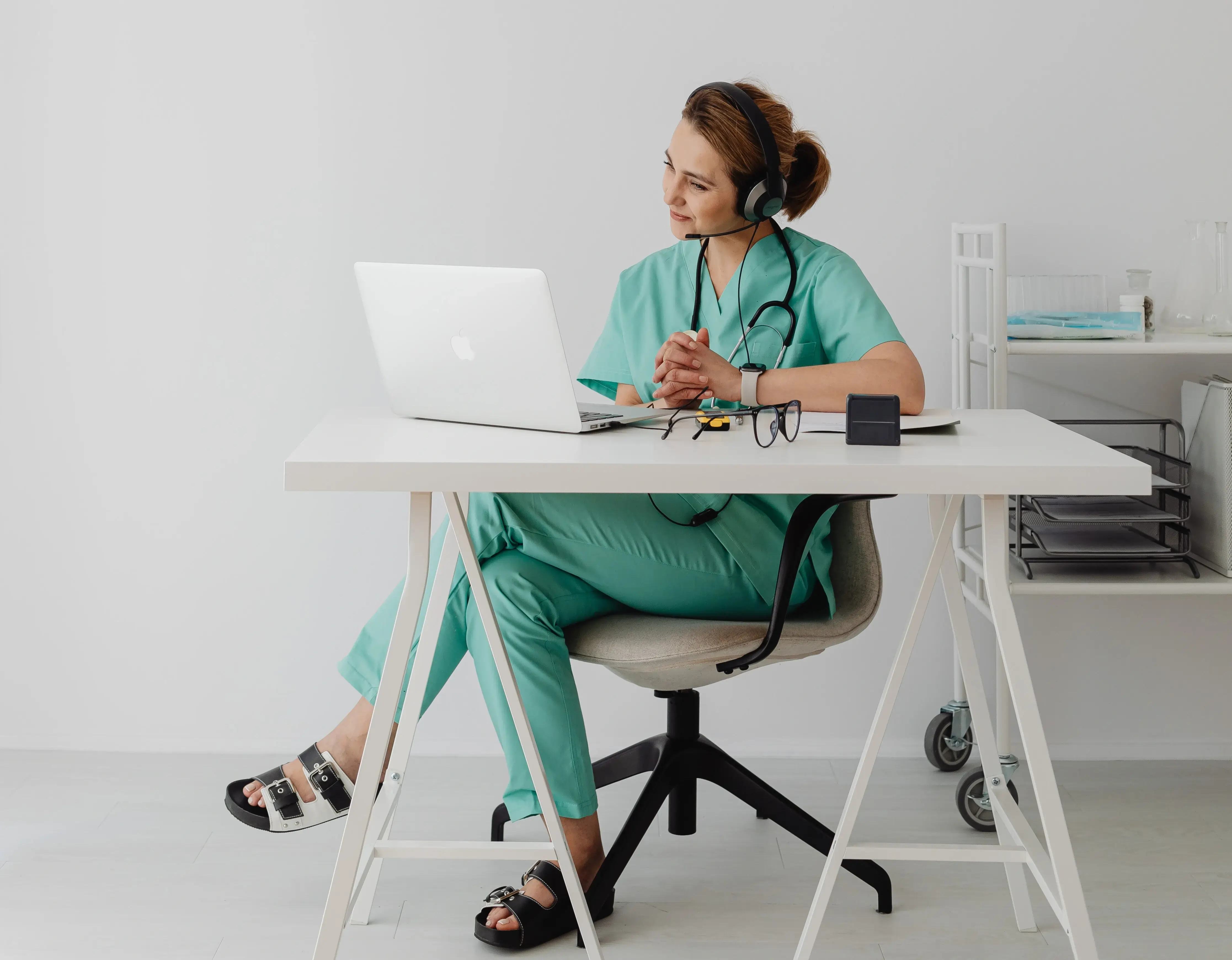Continuing our exploration of telehealth application development, we’d like to share the common trends and answers to FAQs from our clients during telehealth solution development.
Accessibility of products and services
Yeah, this is standard advice, but it doesn’t make it less important in developing a telehealth app. Put your thoughts into patients’ needs and peculiarities to build a solution corresponding to their demands. For example, if you create a product for eye screening tests and diagnosis, you should develop a significant and contrasting user interface and use large fonts and buttons.
Currently, compliance with WCAG (Web Content Accessibility Guidelines) is a mandatory aspect of every successful application. Therefore, never overlook essential components like alt text for visual content, screen readers, and keyboard navigation.
AI integrations in telehealth applications
Nowadays, AI technologies permeate all business domains and technologies, allowing digitization of workflows, processing vast amounts of data, and saving human hours from routine and repetitive tasks. You can choose from various AI-driven features to implement in your telehealth application, from basic chatbots that can assist patients in appointment scheduling to complex image and voice recognition features that will help detect and analyze patient condition deviations.
Meanwhile, the trend toward AI integration paves the way for RPA (Robotic Process Automation) systems like UiPath or cTAKES in healthcare. Integrating these solutions into your healthcare application allows you to extract and organize data from medical records for seamless integration into EHR systems.
Responsive design in telehealth application development
According to the latest market research, mobile segments dominate the market with more than half the share, indicating users’ urge to access telehealth platforms from mobile devices and the potential demand growth for such solutions. From this perspective, it’s crucial to streamline your telehealth platform to be adaptive and responsive to different devices.
To ensure your telehealth app operates seamlessly on every device, start with fluid layouts, flexible media files, and a touch-friendly design. These measures allow users to navigate the touchscreen effortlessly.
Top FAQs about telehealth application development from our clients
What are the three rules of HIPAA compliance?
The Health Insurance Portability and Accountability Act (HIPAA) stands on 3 ground rules:
- Privacy Rule that applies to all forms of individually identifiable health information held or transmitted by covered entities (such as healthcare providers, health plans, and healthcare clearinghouses) or their business associates. This information can include a patient’s medical history, test results, treatment plans, and billing records, among other data.
- Security Rule in turn applies to covered entities (healthcare providers, health plans, and healthcare clearinghouses) and their business associates who handle ePHI. It covers all electronic forms of patient health information, such as electronic medical records, digital images, and emails.
- Breach Notification Rule serves to define the requirements and processes for reporting and responding to security breaches that involve the unauthorized disclosure or access to protected health information (PHI), particularly electronic protected health information (ePHI).
What are the important differences between telehealth and in-person care?
Although the difference between telehealth and in-person care is significant at its core, we highlighted 3 most crucial distinctions, which are:
- Accessibility of telehealth applications that can overcome geographical barriers, making healthcare accessible to individuals in remote or underserved areas. While in-person care may be limited by the patient’s location, especially in rural or distant areas.
- In-person care is commonly used for initial diagnoses and may frequently apply to complex cases and conditions. At the same time, telehealth applications are well-suited for follow-up appointments and managing chronic conditions, as they allow regular remote monitoring and consultations.
- The equally significant difference between telehealth solutions and in-person care is the cost. Telehealth solutions can reduce the cost associated with travel and waiting times, and overall provide cheaper services than in-person interaction.
How to start a telemedicine business?
If you aim to digitize your healthcare business or create a platform for third-party providers, establishing a business plan in this competitive landscape can be challenging. Consider deep market and regulatory research to meet market needs. Outline your business model and services. Identify your target audience for a comprehensive marketing strategy.
Above all, develop a user-centric technological infrastructure to address your audience’s needs. If you face challenges in the technical aspects of business development, our team of experts offers top-notch web development services. Contact our professional developers for consultations and further insights.
Subscribe to our blog

